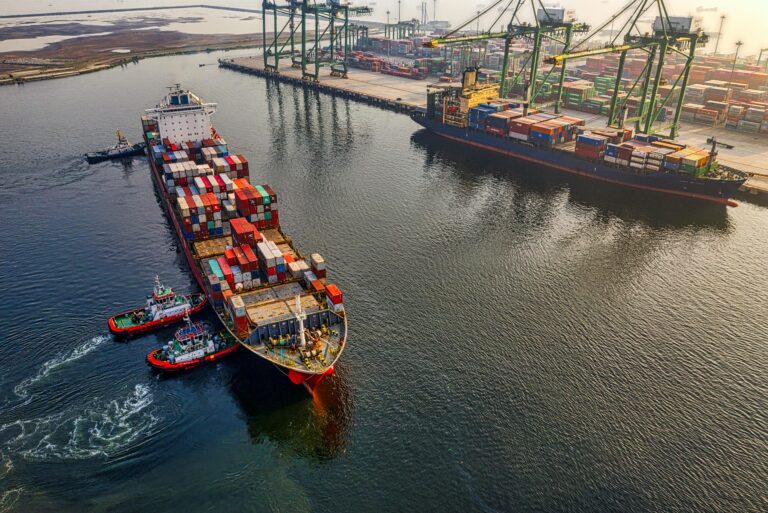A DTC ecommerce channel is one of the fastest and most efficient ways for brands and retailers to break into new markets. But to be successful in any market, merchants must ensure every step of the shopper’s journey is maintained at the highest possible standard. From storefront browsing to ecommerce returns, brands have the opportunity to fine tune outbound and reverse logistics to create an experience that delights the customer.
Related Reading: How to Optimise Reverse Logistics
The buyer’s journey does not necessarily end when the shopper receives their goods. For any number of reasons, customers may choose to return part or all of their order. When that happens, the quality of the reverse logistics experience can be the difference between a happy customer that buys again and a disgruntled shopper that never comes back. More than 6 in 10 consumers say they are unlikely to re-engage with a brand after having a poor return experience.
In addition to potentially losing customers, the operational costs of returns are chipping away at merchants’ balance sheets. In 2022, US shoppers returned approximately 16% of items they purchased. That amounted to around $816 billion in merchandise.
Reducing Ecommerce Returns
Many brands accept returns as part of the cost of doing business. However, merchants can introduce practices that reduce or discourage ecommerce returns. These strategies can help merchants save money and improve the customer experience. To determine which prevention measures to implement, brands must first understand why shoppers are returning merchandise.
According to Insider Intelligence and eMarketer, shoppers in the U.S. and the U.K. report returning items for the following reasons:
55% – Incorrect size, bad fit, or colour
48% – Damaged or defective
46% – Poor quality
36% – Item(s) didn’t look the same as the pictures online
33% – Incorrect item(s) were sent
18% – Multiple sizes or items were ordered with the intent to keep only those that fit
Some of the reasons for online purchase returns are inevitable. But the data show that brands can take steps to reduce returns.
Collect and Analyse Return Data
To best identify the right course of action, brands should collect and analyse return data. Perhaps a particular SKU is being returned at a higher than average rate and for similar reasons. Brands can use this information to make the product description more accurate. Or merchandisers can retake product photos to more accurately represent what the product looks like.
Giving shoppers the most accurate product information possible – including reviews and shopper photos – lets them make better purchasing decisions.
Align Internal Teams
The returns process includes multiple vendors and departments: customer service, delivery service, warehouse, inventory management, finance or accounting.
If these teams are siloed and do not make decisions in consultation with one another, the customer and the bottom line suffer.
According to a McKinsey survey, 58% of retailers don’t have a single owner that manages returns as a whole. This “[leads] to siloed, ad hoc decisions that do not drive impact for the end-to-end business…”
Retailers and brands with DTC channels should involve every ecommerce team to create a comprehensive return policy
Creating Exceptional Ecommerce Return Experiences for Customers

For brands and retailers trying to balance customer expectations with margin maintenance and profit, the solution may lie in adopting reverse logistics best practices. While requirements and goals vary by brand, there are strategies that have proven effective for reducing the amount and cost of returns across industries.
For retailers and brands that want to provide the best reverse logistics experience to their international shoppers, here are six ways to achieve that.
1. PROVIDE PREPAID OR SHOPPER-PAID RETURNS
A whopping 56% of all abandoned carts are due to shipping-related concerns at checkout. To alleviate those concerns many brands offer free outbound shipping as well as return shipping. While many consumers expect free returns, some brands are rolling them back and charging return postage and/or restocking fees.
If free returns are impossible, provide a returns label to the shopper to make the process of sending back the goods as easy as possible. A retailer can provide postage-paid return shipping and then deduct the shipping amount from the shopper’s refund.
Regardless of who pays for the return postage, brands must communicate clearly so the shopper knows how much of their purchase will be refunded.
2. LOCALISE THE RETURN EXPERIENCE
Shoppers want a localised online shopping experience throughout the purchase journey. Brands that invest in localising the buying experience by translating the storefront, converting currencies and shipping from local hubs and warehouses should ensure the post-purchase experience is just as robust.
Customer service should be staffed during local hours and representatives should be native speakers. Likewise, the return portal should be branded and in the local language.
3. PROVIDE MULTIPLE RETURNS OPTIONS FOR SHOPPERS
Shoppers like to have a variety of options when returning goods, and providing options that allow shoppers more control over when and how they return makes for a better shopper experience.
Common returns options for shoppers:
- Courier pick up
- Return in store
- Postal delivery
- Drop off to third-party locations
Providing a range of return options where possible means that shoppers have more control over their returns, leading to a sense of confidence in the brand, which will increase customer loyalty and help generate future sales.
4. TRACK RETURNS TO INCREASE CUSTOMER SATISFACTION
When shoppers make returns, they often do not usually get alerted about the status of the parcel and their refund until the item is received and the refund processed. If there are any delays to this process, this can cause undue worry or concern for the shopper.
Providing return shipment tracking will help give shoppers peace of mind that their parcel is in safe hands, and if any delays arise, it will reduce queries to customer service.
5. USE A FLEXIBLE AND FULLY FUNCTIONAL RETURNS ADMIN PORTAL
Not all returns are created alike. Whether a shopper returns a damaged item, or somehow makes a mistake with the return — such as returning two items but only creating a return for one item — it is important to use a flexible and fully functional returns admin portal as part of a returns management process.
Armed with tools that accommodate various credit rules and reason codes to determine shopper refund value, your brand will be able to process returns quickly and efficiently.
6. REFUND AS QUICKLY AS POSSIBLE
About 62% of customers expect to receive their refund within 30 days of purchase. A delay in processing a return contributes to a negative post-purchase experience. For this reason, many ecommerce brands strive to process refunds within 14 business days.
Processing refunds quickly is not just advantageous for customers — it benefits brands, too. Faster returns give brands a quick turnaround, so they can resell items that are in good condition.
Online retailers can speed up the returns process by having in-country returns hubs. At these hubs, returns are inspected upon receipt and refunds issued. Processing returned merchandise in country accelerates refunds for customers and allows brands to better manage inventory. After all, items can be resold more quickly when they don’t have to sit in customs waiting to be repatriated.
Conclusion
Shoppers all around the world expect smooth reverse logistics processes. Brands that deliver exceptional ecommerce returns experiences build customer loyalty which is essential for long-term market and revenue growth.
ESW can help provide your brand with superb cross-border reverse logistics. This allows you to meet ever-changing customer expectations and increase brand loyalty. We work with some of the world’s best-loved brands to help them delight customers around the globe.
Ready to take your DTC ecommerce to the next level? Learn more about ESW ecommerce solutions today.





